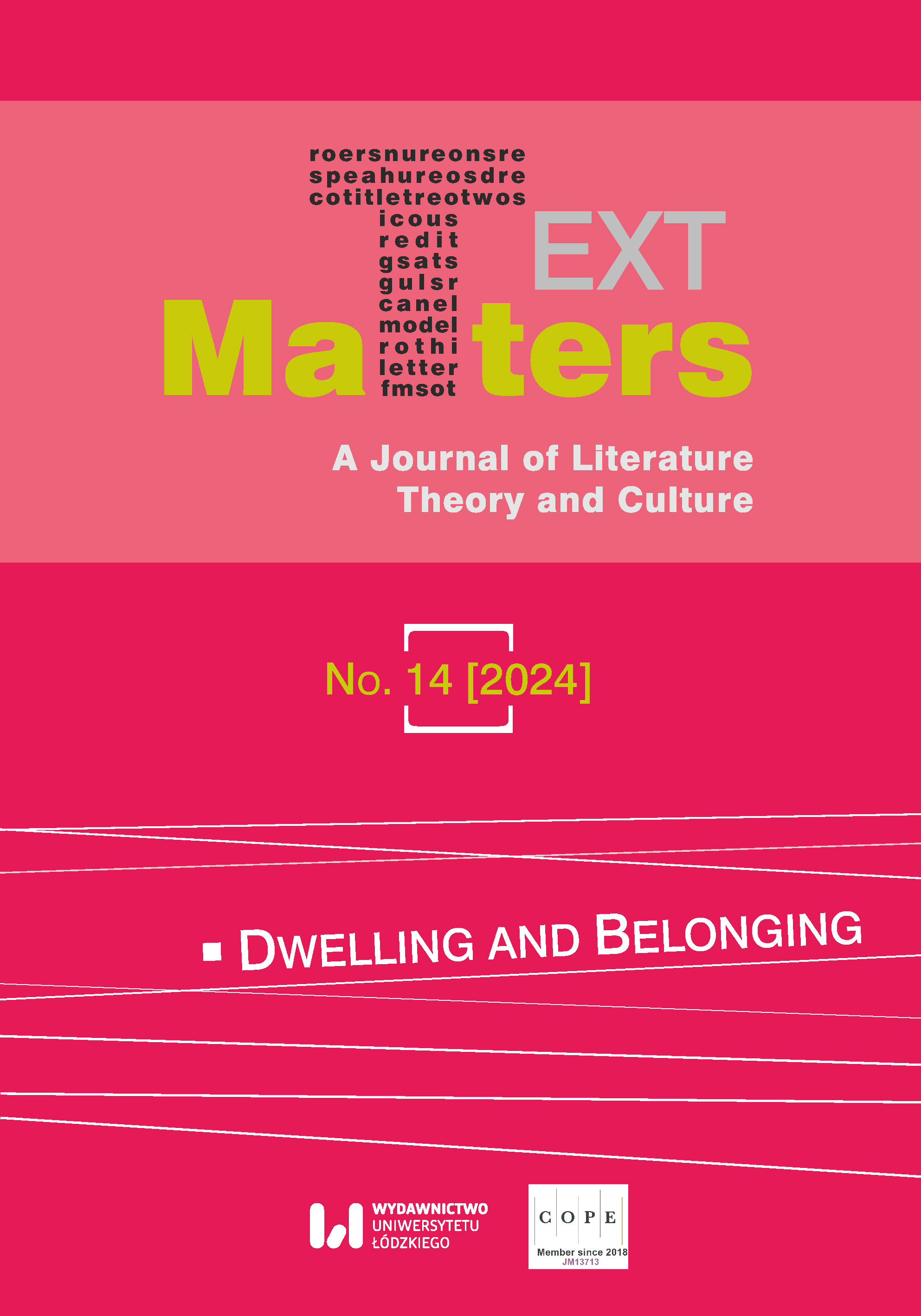Filling the Gaps in Broken Memory while Renewing the Cityscape: Navigating Belonging in Orhan Pamuk’s The Red-Haired Woman
DOI:
https://doi.org/10.18778/2083-2931.14.07Keywords:
memory, Turkey, urban space, Orhan Pamuk, The Red-Haired WomanAbstract
The Red-Haired Woman, one of Orhan Pamuk’s post-Nobel novels, is a concise, fable-like narrative that delves into the complexities of father-son conflicts. The novel parallels the journey of the protagonist, Cem, with the broader socio-cultural context of modern Turkey. It highlights Cem’s struggle between two ideologically contrasting father figures and draws a compelling analogy between his fragmented memory and Turkey’s cultural memories influenced by both the East and West. This paper explores the application of various memory types in the novel, scrutinizes the reliability of its narrators, and analyzes the depiction of urban space in relation to both individual and national memory, with particular focus on the contractor protagonist.
Downloads
References
Assmann, Jan. “Communicative and Cultural Memory.” Cultural Memory Studies: An International and Interdisciplinary Handbook, edited by Astrid Erll and Ansgar Nünning, De Gruyter, 2008, pp. 109–18. https://doi.org/10.1515/9783110207262.2.109
Google Scholar
DOI: https://doi.org/10.1515/9783110207262.2.109
Erll, Astrid. “Cultural Memory Studies: An Introduction.” Cultural Memory Studies: An International and Interdisciplinary Handbook, edited by Astrid Erll and Ansgar Nünning, De Gruyter, 2008, pp. 1–15. https://doi.org/10.1515/9783110207262.0.1
Google Scholar
DOI: https://doi.org/10.1515/9783110207262.0.1
Erll, Astrid. “Regional Integration and (Trans)cultural Memory.” Asia Europe Journal, vol. 8, 2010, pp. 305–15. https://doi.org/10.1007/s10308-010-0268-5
Google Scholar
DOI: https://doi.org/10.1007/s10308-010-0268-5
Göknar, Erdağ. “A Turkish Woman in the Oedipus Complex: Orhan Pamuk’s ‘The Red-Haired Woman.’” Los Angeles Review of Books, 22 Aug. 2017, https://lareviewofbooks.org/article/a-turkish-woman-in-the-oedipus-complex-orhan-pamuks-the-red-haired-woman/ accessed 26 Sept. 2023.
Google Scholar
Göknar, Erdağ. Orhan Pamuk, Secularism and Blasphemy: The Politics of the Turkish Novel. Routledge, 2013. https://doi.org/10.4324/9780203080108
Google Scholar
DOI: https://doi.org/10.4324/9780203080108
Neumann, Birgit. “The Literary Representation of Memory.” Cultural Memory Studies: An International and Interdisciplinary Handbook, edited by Astrid Erll and Ansgar Nünning, De Gruyter, 2008, pp. 333–43. https://doi.org/10.1515/9783110207262.5.333
Google Scholar
DOI: https://doi.org/10.1515/9783110207262.5.333
Nünning, Vera. “Reconceptualising Fictional (Un)reliability and (Un)trustworthiness from a Multidisciplinary Perspective: Categories, Typology and Functions.” Unreliable Narration and Trustworthiness: Intermedial and Interdisciplinary Perspectives, edited by Vera Nünning, De Gruyter, 2015, pp. 83–108. https://doi.org/10.1515/9783110408263
Google Scholar
DOI: https://doi.org/10.1515/9783110408263.83
Pamuk, Orhan. Cevdet Bey ve oğulları. İletişim, 2003.
Google Scholar
Pamuk, Orhan. My Name is Red. Translated by Erdağ M. Göknar, Faber & Faber, 2011.
Google Scholar
Pamuk, Orhan. Silent House. Translated by Robert Finn, Faber & Faber, 2013.
Google Scholar
Pamuk, Orhan. The Museum of Innocence. Translated by Maureen Freely, Faber & Faber, 2009.
Google Scholar
Pamuk, Orhan. The Red-Haired Woman. Translated by Ekin Oklap, Vintage, 2018.
Google Scholar
Pamuk, Orhan. The White Castle. Translated by Victoria Holbrook, Faber & Faber, 2015.
Google Scholar
Rentzsch, Julian. “A Modern Urban Epic: Kırmızı Saçlı Kadın.” Texts, Contexts, Intertexts: Studies in Honor of Orhan Pamuk, edited by Julian Rentzsch and Petr Kučera, Ergon, 2022, pp. 333–92. https://doi.org/10.5771/9783956509742-333
Google Scholar
DOI: https://doi.org/10.5771/9783956509742-333
Schmid, Wolf. “Implied Author.” Handbook of Narratology, edited by Peter Hühn, John Pier, Wolf Schmid and Jörg Schönert, De Gruyter, 2009, pp. 161–73. https://doi.org/10.1515/9783110217445.161
Google Scholar
DOI: https://doi.org/10.1515/9783110217445.161
Türker Gümüş, Elif. “A Novel like a Well: A Girardian Reading of Pamuk’s The Red-Haired Woman.” Orhan Pamuk: Critical Essays on a Novelist between Worlds, edited by Taner Can, Berkan Ulu and Koray Melikoğlu, Ibidem, 2017, pp. 231–47.
Google Scholar
Published
Versions
- 2024-11-28 (2)
- 2024-11-28 (1)
How to Cite
Issue
Section
License

This work is licensed under a Creative Commons Attribution-NonCommercial-NoDerivatives 4.0 International License.













